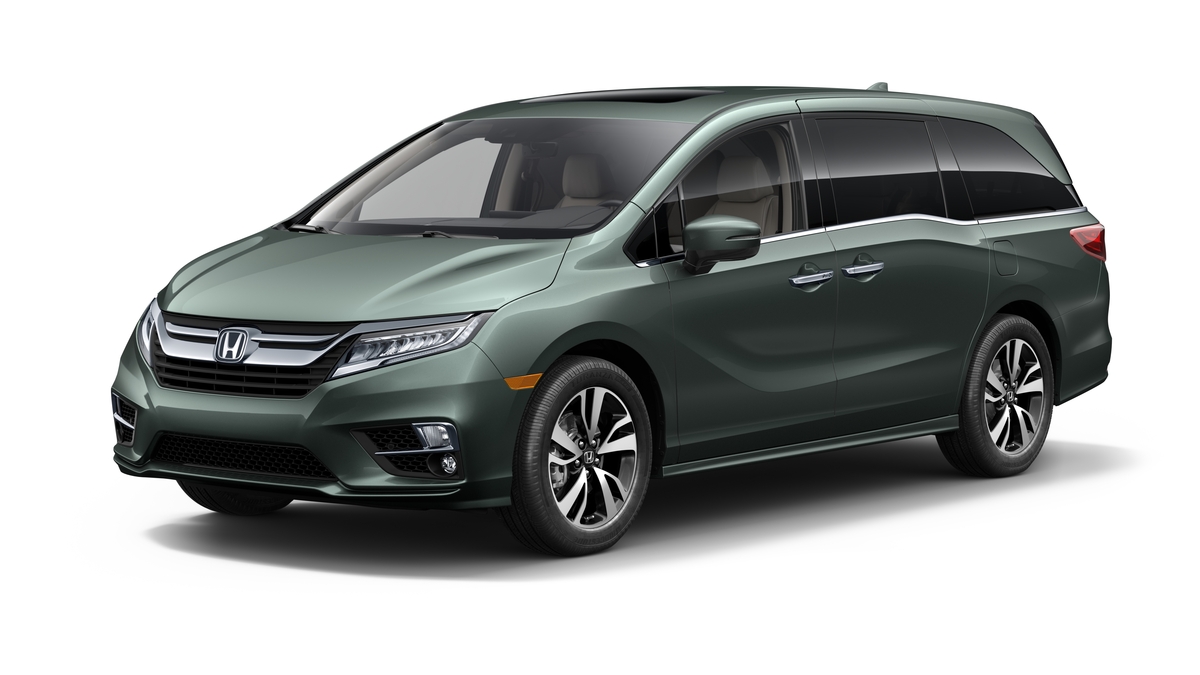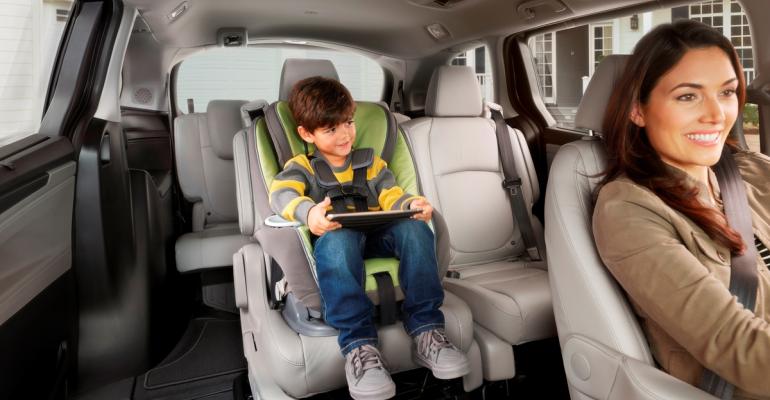KONA, HI – Despite a 21% decline in small-van sales this year and a 31% drop in Odyssey deliveries, Honda is confident the segment, and its position in it, is solid as it launches the fifth generation of the minivan next month.
“We think the market is fairly stable (at) around half a million (annual volume) and our share of that, at around 125,000, is pretty well spoken for,” Jay Joseph, product planning for American Honda, tells WardsAuto here during an ’18 Odyssey preview.
Odyssey sales slipped 5.4% in 2016 to 120,846, while WardsAuto’s Small Van segment inched up 6.1% to 643,528, a 9-year high for a group that had been closer to the 500,000-mark in annual volume.
The sector’s growth last year resulted from increased sales of commercial vans from Mercedes, Nissan and Ram, as well as rising deliveries of the Dodge Caravan and Kia Sedona. The new Chrysler Pacifica also provided a shot in the arm to the group.
Of the Odyssey’s 31% drop through April, Honda says two new products at the minivan’s Lincoln, AL, plant, the Honda Ridgeline pickup and Acura MDX Sport Hybrid CUV, have eaten into capacity for the van. The capacity crunch is expected to ease with the shift of the MDX to Honda’s East Liberty, OH, vehicle-assembly plant this year.
Honda is confident in the segment’s solidity because, for many customers, nothing can replace the functionality of a minivan and its sliding doors, cavernous interior space and family-friendly features.
“With minivans there’s still a lot of focus on functionality…so there’s a lot of customers that still want a minivan; that’s what meets their needs,” says Dan Tiet, senior product planner-American Honda.
In keeping with the tradition of minivan one-upmanship, Honda has made a variety of additions and improvements to lure its target buyers, those between the ages of 35-50 with families. Honda’s trademarked magic seats are back, but this time as “Magic Slide” due to the second-row seats’ ability to slide side-to-side as well as fore-and-aft, similar to the way the Kia Sedona’s second-row seats move.
But Honda advances the feature by allowing its seats to slide forward when they are positioned toward the center, placing a small child near the back of the center console and between the two front seats so parents can more easily pick up dropped pacifiers or provide snacks.
The ’18 Odyssey, like the Toyota Sienna, has an in-vehicle microphone so parents can be heard by their children, even when the kids are wearing the minivan’s wireless headphones.
Honda goes further by adding an in-vehicle camera, dubbed CabinWatch and reportedly supplied by Magna, so parents can zoom in on a child’s face to see if they are sleeping or awake.
“CabinWatch is something that is taking the conversation mirror into the 21st century,” says Tiet, although Honda still offers an old-fashioned version in the upper Elite grade driven here.
While it seems like every new minivan has a groundbreaking feature like the prior generation’s in-vehicle vacuum or the new van’s CabinWatch, Tiet and Joseph say Honda doesn’t feel pressure to come up with one or set out to do so.
The ’18 Odyssey’s Magic Slide seat “wasn’t necessary to create a cool, whiz-bang feature, but it was trying to under stand our customers’ needs and coming up with solutions for it,” says Tiet, adding Honda also wanted to solve the “wall of seats” conundrum in a minivan’s second row that prevents access to the third row. The Magic Slide seats help here, too, by creating a large side path to the third row when one is pushed inward.
stand our customers’ needs and coming up with solutions for it,” says Tiet, adding Honda also wanted to solve the “wall of seats” conundrum in a minivan’s second row that prevents access to the third row. The Magic Slide seats help here, too, by creating a large side path to the third row when one is pushed inward.
Joseph says it is Honda’s legacy to have innovation in the Odyssey, noting the ’99 Odyssey had a Magic Seat, a 1-piece third-row bench seat that folded into the floor.
“There has to be some innovation. We’re not Honda if we’re not pushing a little bit forward and challenging the convention of the segment,” he says.
The Odyssey also sees updates on the powertrain and infotainment sides, with a ZF 9-speed automatic or Honda 10-speed automatic transmission standard on the van depending on grade, as well as a new Android-based operating system and faster processors bringing about restructured menus and speedier touchscreen selections.
The Odyssey gets the 3.5L direct-injected V-6 from the Honda Pilot CUV. Compared with the ’17 Odyssey’s port-injected 3.5L V-6, horsepower rises from 248 to 280 and torque goes from 250 lb.-ft. (339 Nm) to 262 lb.-ft. (355 Nm). The DI engine also has cylinder deactivation and stop-start technology to improve fuel economy.
The ’18 Odyssey has available 4G LTE WiFi, a step up from the Pacifica’s 3G connectivity, Honda notes. Rates for the feature will be set by partner AT&T and are yet to be announced.
For a quieter cabin, Honda says it took “extreme measures” to limit noise, vibration and harshness. Acoustic spray foam is used for the first time in an Odyssey, applied in 14 locations such as inside pillars and at the base of the windshield frame. Acoustic tape at the base of A-, B- and C-pillars and a foam stopper at the bottom of the B-pillar help achieve a 55% reduction in body leaks and limits noise entering the cabin. Not all acoustic measures are on all grades, with acoustic door glass only on the top Elite grade of the minivan.
Honda also says the Odyssey’s aerodynamics have improved from ’17 to ’18 through measures such as an active shutter grille. It doesn’t release a coefficient of drag figure, however, due to varying ways manufacturers calculate CD, says Joseph.





